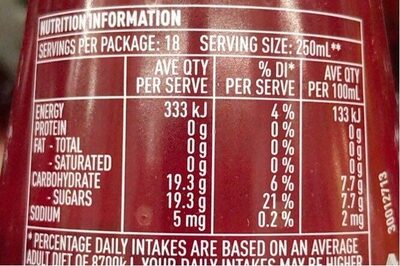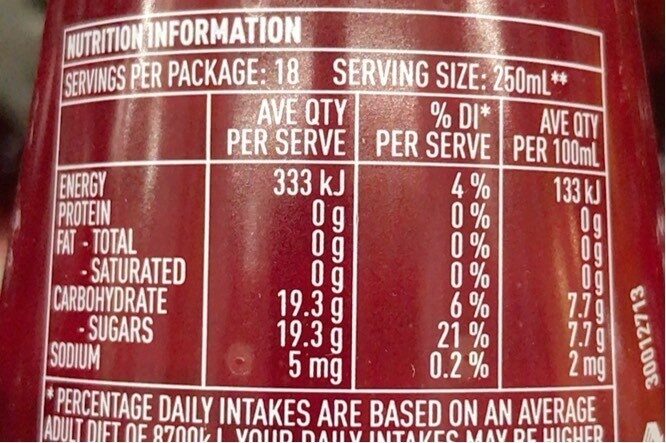Raspberry Flavoured Premium cordial - Schweppes - 750mL
This product page is not complete. You can help to complete it by editing it and adding more data from the photos we have, or by taking more photos using the app for Android or iPhone/iPad. Thank you!
×
Barcode: 9315596002576 (EAN / EAN-13)
Quantity: 750mL
Packaging: Glass bottle
Brands: Schweppes
Labels, certifications, awards: Australian made
Origin of ingredients: Australia and Imported
Manufacturing or processing places: Australia
Stores: Woolworths, Coles
Countries where sold: Australia
Matching with your preferences
Environment
Packaging
Transportation
Report a problem
Data sources
Product added on by dasre
Last edit of product page on by teolemon.
Product page also edited by archanox, kiliweb, openfoodfacts-contributors, packbot, roboto-app, yuka.sY2b0xO6T85zoF3NwEKvlhVVa__miS2UKhXWlmzS-_WlA67pMO8u84nAN6g, yuka.sY2b0xO6T85zoF3NwEKvlkN_WOberB78bgT4q3DT2c-2K4axfddtuK79bKo.










